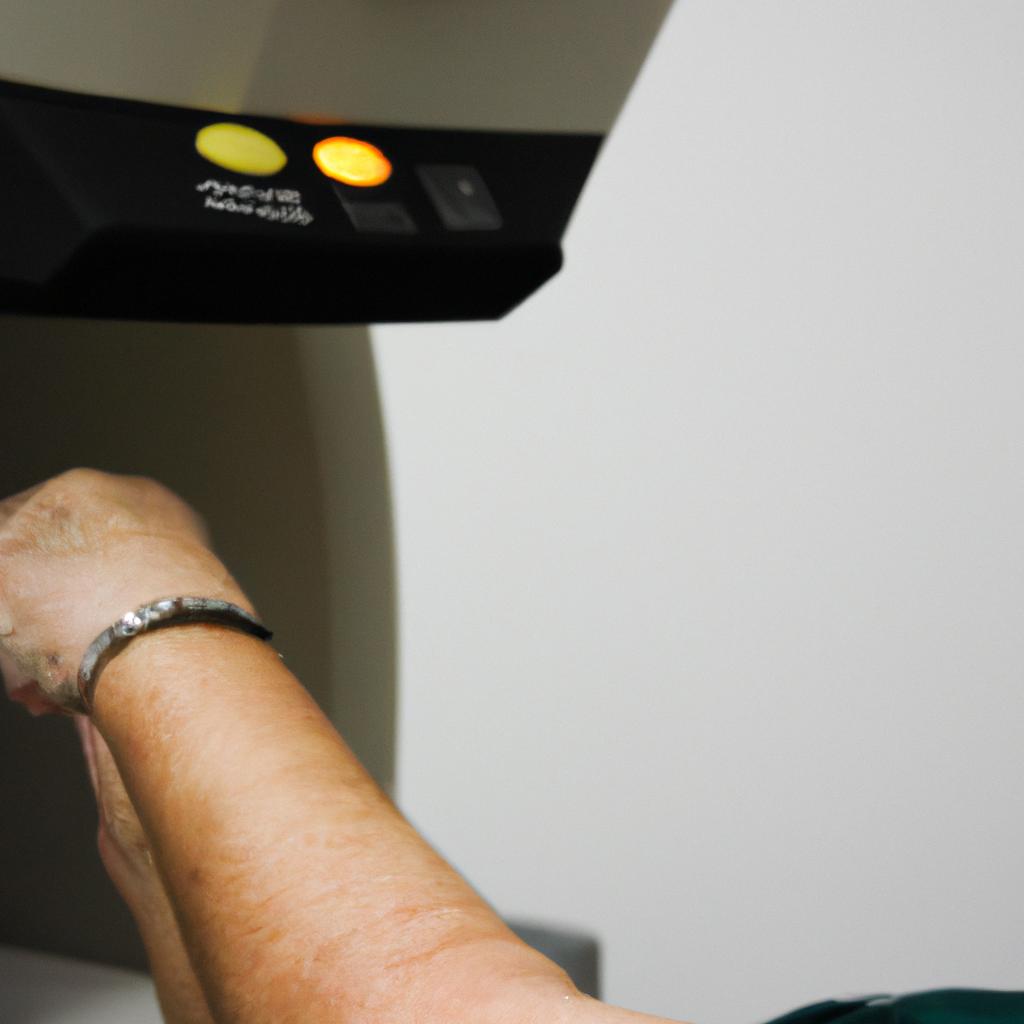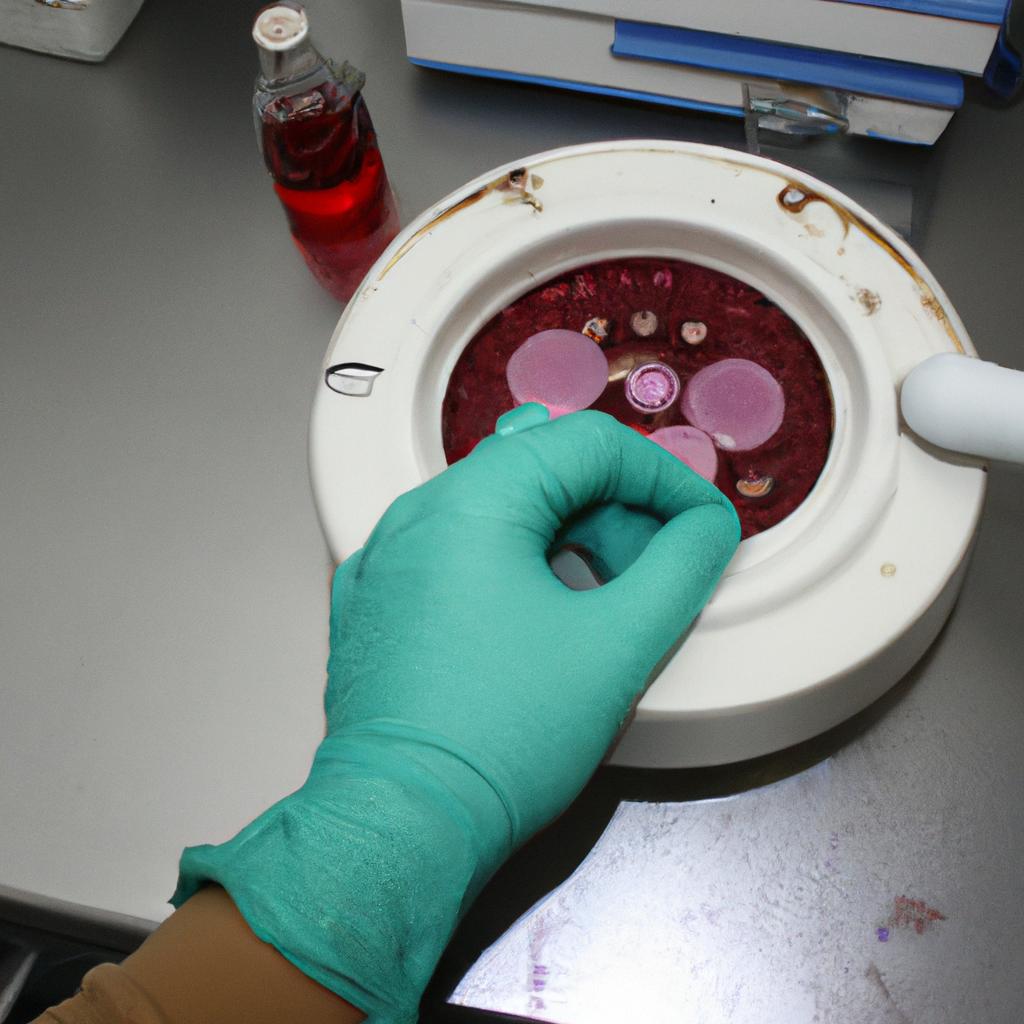Cancer is a complex and multifaceted disease that continues to pose significant challenges in both diagnosis and treatment. Understanding the risk factors associated with cancer development is crucial for effective prevention strategies and early detection. Among the various categories of risk factors, health conditions and diseases have been extensively studied due to their potential impact on cancer incidence. For instance, let us consider an example where an individual diagnosed with chronic inflammatory bowel disease (IBD) faces an increased risk of developing colorectal cancer. This hypothetical scenario highlights the importance of investigating the relationship between specific health conditions and cancer.
When examining the link between health conditions and cancer, it becomes evident that certain diseases can significantly contribute to an individual’s susceptibility to develop malignancies. Chronic infections caused by pathogens such as human papillomavirus (HPV), hepatitis B virus (HBV), or human immunodeficiency virus (HIV) have been shown to increase the likelihood of developing specific types of cancers like cervical, liver, or Kaposi sarcoma respectively. Moreover, autoimmune disorders like rheumatoid arthritis and systemic lupus erythematosus have also been associated with an elevated risk of lymphoma development. By delving into these relationships, healthcare professionals can gain valuable insights into the underlying mechanisms connecting different health conditions and cancer.
Understanding the underlying mechanisms connecting different health conditions and cancer can help in several ways. Firstly, it allows for improved screening and early detection strategies. For example, individuals with chronic inflammatory bowel disease may undergo more frequent colonoscopies to detect any signs of colorectal cancer at an early stage when treatment outcomes are generally better.
Secondly, studying these relationships can contribute to the development of targeted prevention strategies. By identifying specific risk factors associated with certain health conditions, healthcare professionals can implement measures to reduce the likelihood of cancer development in susceptible individuals. This could include interventions such as vaccination against HPV or HBV, or providing regular screenings for individuals with autoimmune disorders.
Furthermore, understanding the connections between health conditions and cancer can guide treatment decisions. It helps healthcare providers tailor therapies to address both the primary condition and potential cancer risks. For example, in patients with rheumatoid arthritis who are at higher risk of lymphoma, physicians may choose medications that have a lower risk of malignancy or closely monitor for any signs of lymphoma during treatment.
Overall, investigating the relationship between health conditions and cancer is crucial for effective prevention, early detection, and personalized treatment approaches. By gaining insights into these connections, healthcare professionals can work towards reducing the burden of cancer and improving patient outcomes.
Tobacco use and exposure
Tobacco use and exposure are widely recognized as significant risk factors for developing cancer. For instance, let us consider a hypothetical case study of an individual who has been smoking for several years. This person’s prolonged exposure to tobacco smoke increases their chances of developing various types of cancers, including lung, throat, mouth, esophageal, pancreatic, bladder, kidney, and cervical cancer.
It is important to note that the harmful effects of tobacco extend beyond just active smokers. Secondhand smoke also poses a considerable health risk. Non-smokers who regularly inhale secondhand smoke may experience adverse effects similar to those seen in active smokers. This includes an increased likelihood of developing lung cancer and other respiratory conditions.
- Tobacco use accounts for approximately 30% of all cancer deaths worldwide.
- Lung cancer caused by smoking is responsible for nearly 85% of all cases.
- Smoking not only affects the smoker but also endangers the health of those around them through secondhand smoke.
- Quitting smoking at any age can significantly reduce the risk of developing cancer-related illnesses.
Additionally, we provide a table below highlighting some common types of cancer associated with tobacco use:
| Cancer Type | Risk Increase |
|---|---|
| Lung | High |
| Throat | Moderate |
| Mouth | Moderate |
| Pancreas | High |
In conclusion, it is evident that tobacco use and exposure pose substantial risks when it comes to developing various forms of cancer. The detrimental effects extend beyond individuals who actively engage in smoking to include non-smokers exposed to secondhand smoke as well. It is crucial to raise awareness about these risks and promote cessation efforts to reduce the burden imposed by tobacco-related cancers.
Moving forward into our next section on “Obesity and unhealthy diet,” another set of risk factors will be explored, contributing to the multifaceted nature of cancer etiology.
Obesity and unhealthy diet
As we delve further into the risk factors for cancer, it is crucial to examine the role of obesity and unhealthy diet in contributing to this prevalent disease. By exploring the impact of these lifestyle choices on cancer development, we can gain a deeper understanding of how our dietary habits affect our overall health.
Example:
To illustrate this connection, let’s consider an imaginary case study involving two individuals: John and Sarah. John maintains a healthy weight and follows a balanced diet rich in fruits, vegetables, whole grains, and lean proteins. In contrast, Sarah struggles with excess weight due to poor eating habits characterized by high consumption of processed foods, sugary beverages, and limited physical activity. Over time, these contrasting lifestyles may lead to divergent outcomes regarding their susceptibility to developing certain types of cancer.
Impact of Obesity and Unhealthy Diet:
-
Increased Risk: Studies have consistently shown that individuals who are obese face an elevated risk of various cancers compared to those with normal body mass index (BMI). This heightened vulnerability is attributed to several factors, including chronic inflammation caused by excessive adipose tissue and altered hormone levels.
-
Dietary Factors: An unhealthy diet devoid of essential nutrients but abundant in saturated fats, added sugars, and refined carbohydrates contributes significantly to cancer development. Such dietary patterns not only promote obesity but also provide fuel for tumor growth through increased insulin resistance and systemic inflammation.
-
Specific Cancers: The relationship between obesity/dietary choices and specific cancers has been extensively investigated. Research suggests a strong association between obesity/unhealthy diets and the incidence of breast, colorectal, pancreatic, renal cell carcinoma (RCC), endometrial cancers among others.
Table – Common Types of Cancer Associated with Obesity/Unhealthy Diet:
| Type of Cancer | Link to Obesity/Diet |
|---|---|
| Breast | Higher risk among postmenopausal women with obesity |
| Colorectal | Increased risk due to high intake of processed meats |
| Pancreatic | Higher incidence associated with a diet rich in red meat |
| Renal Cell Carcinoma (RCC) | Elevated risk in overweight individuals |
| Endometrial | Strong link between obesity and endometrial cancer |
The evidence overwhelmingly supports the notion that obesity and unhealthy dietary choices play a significant role in increasing the risk of developing various types of cancer. By making conscious efforts to maintain a healthy weight and adopt balanced eating habits, we can potentially mitigate these risks. In the subsequent section on chronic infections and viruses, we will further explore how certain infections contribute to the development of cancer.
Understanding the impact of chronic infections and viruses is essential in comprehending another critical aspect of cancer risk factors.
Chronic infections and viruses
Obesity and unhealthy diet are not the only factors that can increase an individual’s risk of developing cancer. Chronic infections and viruses have also been identified as potential contributors to this disease. For instance, let us consider a hypothetical case study involving Sarah, a 45-year-old woman who was diagnosed with cervical cancer. Upon further investigation, it was discovered that she had contracted the human papillomavirus (HPV), which is known to be strongly linked to cervical cancer.
Chronic infections and viruses carry their own set of risks when it comes to cancer development. Here are some key points to consider:
- Persistent infection: In some cases, certain viruses may persist in the body for extended periods, leading to chronic infection. This continuous presence of viral particles can gradually damage healthy cells and potentially result in the formation of cancerous growths.
- Immunosuppression: Individuals with weakened immune systems due to conditions such as HIV/AIDS or organ transplantation face a higher susceptibility to chronic viral infections. The compromised ability of their immune system leaves them more vulnerable to cellular changes caused by these infectious agents.
- Direct oncogenic effects: Some viruses possess genes that directly interfere with normal cell regulation mechanisms, promoting uncontrolled cell division and increasing the likelihood of tumor formation.
- Indirect effects on host cells: Chronic viral infections can trigger chronic inflammation within tissues, disrupting the delicate balance required for proper cellular functioning. Prolonged inflammation provides an environment conducive to genetic mutations and alterations that favor malignant transformation.
To emphasize the significance of chronic infections and viruses in relation to cancer risk factors, we present a table highlighting notable examples:
| Virus | Associated Cancer | Mode of Transmission |
|---|---|---|
| Human papillomavirus | Cervical, anal | Sexual contact |
| Hepatitis B virus | Liver | Bloodborne |
| Epstein-Barr virus | Hodgkin’s lymphoma, | Saliva |
| nasopharyngeal carcinoma | ||
| Human T-cell | Adult T-cell leukemia/ | Sexual contact |
| lymphotropic lymphoma |
As we delve deeper into our understanding of cancer, it becomes increasingly apparent that chronic infections and viruses play a significant role in its development. Identifying these risk factors not only allows for targeted prevention strategies but also highlights the importance of maintaining overall health and practicing safe behaviors.
*[HPV]: Human papillomavirus
Environmental factors and pollutants
In addition to chronic infections and viruses, environmental factors and pollutants can also play a significant role in increasing the risk of developing cancer.
Environmental factors such as exposure to certain substances or pollutants have been linked to an increased risk of cancer. For example, let’s consider the case study of Sarah, who lived near an industrial area for several years. She was exposed to high levels of air pollution containing harmful chemicals like benzene and formaldehyde. Studies have shown that long-term exposure to these pollutants is associated with an elevated risk of developing lung cancer.
To further understand the impact of environmental factors on cancer risk, it is essential to consider some key points:
- Air pollution: Inhalation of polluted air, particularly in densely populated urban areas or close proximity to industrial sites, has been linked to various cancers such as lung, bladder, and breast cancer.
- Water contamination: Exposure to contaminated water sources that contain carcinogens like arsenic or asbestos may increase the likelihood of developing liver or kidney cancer.
- Occupational hazards: Certain occupations involving exposure to hazardous materials like asbestos, pesticides, or radiation can significantly elevate the risk of specific types of cancers among workers.
- Lifestyle choices: Personal behaviors related to lifestyle choices can contribute to environmental exposures. For instance, smoking tobacco not only exposes individuals directly but also releases second-hand smoke into the environment, affecting others’ health.
| Environmental Factors | Associated Cancers |
|---|---|
| Air pollution | Lung, bladder |
| Water contamination | Liver |
| Occupational hazards | Mesothelioma |
| Lifestyle choices | Secondhand smoke |
In light of these findings and considerations, it is crucial for policymakers and individuals alike to take appropriate measures towards minimizing exposure to environmental toxins. Efforts should be made at both individual and societal levels through implementing stricter regulations on emissions control, promoting sustainable practices, and encouraging healthier lifestyle choices. By addressing these environmental risk factors, we can potentially reduce the incidence of cancer and promote better overall health.
Moving forward, it is also important to explore how genetic predisposition and family history contribute to one’s susceptibility to cancer.
Genetic predisposition and family history
Environmental factors and pollutants, such as exposure to carcinogens in the air, water, or soil, can significantly contribute to an individual’s risk of developing cancer. However, it is important to note that these environmental factors alone are not always sufficient to cause cancer; they often interact with other risk factors to increase susceptibility.
To illustrate the impact of environmental factors on cancer risk, consider a hypothetical scenario where a community located near an industrial area experiences high levels of air pollution due to emissions from nearby factories. Over time, residents in this community may have increased exposure to harmful substances such as asbestos particles or volatile organic compounds (VOCs). This prolonged exposure could lead to mutations in their DNA and potentially result in the development of various types of cancers.
When discussing environmental factors and their association with cancer risk, several key points should be considered:
- Certain occupations may involve regular exposure to hazardous substances or conditions that can heighten the risk of developing occupational-related cancers.
- Environmental pollutants can accumulate in certain areas over time, leading to higher concentrations and an increased likelihood of health consequences for individuals residing there.
- The effect of environmental factors on cancer risk can vary depending on geographical location and lifestyle choices.
- Reducing exposure to environmental pollutants through regulations and individual actions plays a crucial role in minimizing cancer risks associated with these factors.
The following bullet point list further emphasizes the potential outcomes resulting from prolonged exposure to environmental hazards:
- Increased incidence of lung cancer among individuals living near heavily polluted urban areas
- Higher rates of skin cancer observed in populations exposed to excessive sunlight without adequate protection
- Elevated risk of bladder cancer linked with long-term exposure to chemicals found in drinking water contaminated by industrial waste
- Greater vulnerability for breast cancer development among women exposed to endocrine-disrupting chemicals commonly present in cosmetics or household products
Additionally, a table highlighting different types of carcinogens and their sources can help readers better understand the variety of ways one might come into contact with these harmful substances:
| Carcinogen | Source |
|---|---|
| Asbestos | Construction materials |
| Benzene | Tobacco smoke |
| Formaldehyde | Household products |
| Arsenic | Industrial waste |
In summary, environmental factors and pollutants can significantly contribute to an individual’s risk of developing cancer. Occupational exposure, geographical location, and lifestyle choices all play a role in determining the likelihood of encountering carcinogens. By understanding these risks and taking necessary precautions, individuals can reduce their exposure to environmental hazards and ultimately minimize their chances of developing cancer.
Moving forward, we will now explore another significant factor that contributes to cancer risk – hormonal imbalances and reproductive factors.
Hormonal imbalances and reproductive factors
Section H2: Hormonal Imbalances and Reproductive Factors
In addition to genetic predisposition and family history, hormonal imbalances and reproductive factors can also play a significant role in increasing the risk of developing cancer. These factors encompass various health conditions related to hormone levels as well as specific aspects of an individual’s reproductive life. By exploring these connections further, we can gain valuable insights into potential preventive measures and early detection strategies.
One example that illustrates the impact of hormonal imbalances on cancer risk is polycystic ovary syndrome (PCOS). This common endocrine disorder affects women of childbearing age and is characterized by irregular menstrual cycles, elevated levels of male hormones (androgens), and ovarian cysts. Research has shown that PCOS may be associated with an increased risk for several types of cancer, including endometrial cancer. The underlying mechanisms are still being investigated but are thought to involve hormonal imbalances such as elevated estrogen levels and insulin resistance.
Understanding the link between hormonal imbalances/reproductive factors and cancer risk is crucial for raising awareness about preventive measures individuals can take. Here are some key points to consider:
- Hormone replacement therapy (HRT): Long-term use of certain types of hormone replacement therapies, particularly those containing estrogen alone or combined with progesterone, have been linked to an increased risk of breast cancer.
- Early menarche/late menopause: Women who start menstruating at an early age or experience late menopause have a higher lifetime exposure to estrogen and thus may face a slightly higher risk for breast, ovarian, and endometrial cancers.
- Oral contraceptives: While taking oral contraceptives has been found to reduce the risks associated with ovarian and endometrial cancers over time, it may slightly increase the risk for breast cancer during current usage.
- Pregnancy-related factors: Multiple pregnancies before the age of 30 have been found to decrease the overall risk of developing breast cancer.
To further comprehend the relationship between hormonal imbalances/reproductive factors and cancer risk, let’s take a closer look at the following table:
| Reproductive Factor | Associated Cancer |
|---|---|
| Early menarche | Breast, ovarian |
| Late menopause | Breast, ovarian, endometrial |
| Long-term HRT use | Breast |
| Multiple pregnancies before age 30 | Breast |
By acknowledging these connections, individuals can make informed decisions regarding contraceptive methods, hormone replacement therapies, and regular screenings. It is essential to consult healthcare professionals for personalized guidance on managing hormonal imbalances and reproductive factors in order to mitigate potential risks associated with cancer development.
In summary, hormonal imbalances and reproductive factors are vital elements in understanding an individual’s susceptibility to certain types of cancer. Through research and knowledge dissemination, we can empower individuals with information that enables them to proactively manage their health and reduce their overall risk of developing cancer.
 Web Firma
Web Firma



